With an extended season this year and over 710 inches of snow, Palisades Tahoe is now the only ski resort open in the Lake Tahoe basin. You know what that means: We also have the only Terrain Parks. You’ve probably seen the buzz on social media about our current setup in Gold Coast and the excitement around the new Emigrant Gully Park. Our terrain parks are designed to challenge riders of all levels, from beginner to expert, and to provide a fun and safe experience for everyone. Our dedicated terrain park crew works tirelessly to maintain and improve our parks throughout the season, constantly adding new features and updating layouts to keep things fresh. Here’s a deeper look at the work they do.
Photo above: Marcus Morgan
FOLLOW ALONG: DAY SHIFT
The day shift at Palisades Tahoe usually has about 12 people working around 10 hours a day, from 7am-5pm.
7am: The crew shows up and meets in the office at the base of Red Dog. They boot up and grab their skis and boards and head over to the Funitel.
7:15am: The crew loads the Funitel and heads to the Upper Terrain Parks Shop, located in the Gold Coast complex. If you ever look out the Funitel window and see a long row of snow cats lined up, this is the area where many of our upper mountain crews have offices and work spaces, including Terrain Parks. Once in the Upper Shop, the crew has a morning meeting where they make their daily plan.
7:45am: The crew splits up into two groups. Half will go to Gold Coast, and half will go to Emigrant Gully. (In times when we have a larger park offering, there is a group for each park.) Prior to 9am, there’s a lot of work that needs to get done: raking, checking rope lines, setting flags, flat-topping the jumps, setting up entrances and signage, etc. Essentially, they’re trying to ensure the parks are in tip-top shape for opening.
9am: As the park opens, team members take turns testing out the features. They try to make sure every feature or jump gets hit to ensure that it is safe and riding properly, with nothing broken or off. Throughout the entire day, staff are patrolling the park to make sure that people are using the features safely and that they are in the right park for their ability level.
10:30am: Salt time! Usually from mid-March onwards, a crucial piece of terrain park maintenance is salting the jumps. This helps keep the entrances to jumps slick and smooth so that you don’t lose speed as you head uphill for takeoff. We’ll send teams up on snowmobiles with “salt monkeys” to do this work. Here’s what it looks like when we’re out there salting:


12:30pm: We try to get everyone a lunch break before 12:30pm, so that we can do our daily re-raking and more salting of the park at this time.
3:30pm: The crew starts breaking down the park for the day and rakes one more time. Park management usually has a meeting at this time — the night shift comes in around 3:30, so the day shift and night shift supervisors will check in to make a plan.
5pm: Everybody straps in and rides down Mountain Run. Terrain Parks people are usually the last of the skiers/snowboarders coming off the mountain every day; they head down after Patrol has finished sweep for the day.

FOLLOW ALONG: NIGHT SHIFT
The day shift at Palisades Tahoe usually has about 4 people working from 3:30pm-12:30am. This is when the Terrain Park groomers come in to work. Our Terrain Park Grooming staff is separate from our main Grooming department.
2pm: Work hasn’t started yet, but some of our staff will come in a bit early to take a few laps in the park and get a feel for what they’ll be working on in the evening.
3pm: The official start time for the night shift to arrive in the base area and head up the Funitel to the upper shop.
3:30pm: Supervisors check in with the day shift to make a plan for anything that might need to be put in or taken out. Day staff gives a list of what needs to be done, and the night shift will decide the priorities.
4pm onward: With the meeting done and snowcats warmed up, park groomers head out on the hill. The first part of their shift is spent grooming out the parks before switching to building work. This time of year, in the springtime, when the snow is extra slushy, operators have to groom the parks SUPER fast. Wherever the operators WON’T be building gets groomed first; that way, it sets up hard and lasts longer.

Once the park area has been groomed, the work of building or rebuilding will start. Pushing out snow into large jumps requires excellent knowledge of snow manipulation, which can take years of experience to acquire. Pushing out a snow pile into a large jump (like the 65-foot jump we have in Gold Coast right now) can take a few days of work, and then the jump will be refined over a period of several weeks.
When it comes to putting in a feature, like a rail, for example, the operators can work solo or in tandem. Features (like a rail or a box) can be attached to the blade of a snowcat. The blade is the attachment in the front of a snowcat that is used to physically push snow.

FAQs
How do you design a terrain park?
It really is a group effort! A lot of areas are pre-established, and we put similar features there each season. We follow the natural slopes where we can. Newer employees will learn about building from seasoned team members, but it is a very inclusive process, where we welcome any ideas and talk it all through. A lot of the time, when the crew is working through an idea, they’ve just got a traditional pen and paper to sketch out their ideas. There are also drone photos of the terrain park areas in the Parks office, which can be marked up with erasable markers to showcase new ideas.
Once a jump or feature is constructed, we will often tweak it continuously until it is perfect. There’s a ton of trial and error. We also work closely with the company Effective Edge to help us with safety protocols and training.
Where do you get the snow for the big jumps, like the 65-foot jump?
It is usually man-made snow! Since the jumps are typically put in the same place each year, we have snowmaking guns installed at each jump. In a big year like this one, we rely less on snowmaking. Our snowcats are equipped with an imaging system that tells us what the snowpack is wherever we are on the mountain, which makes it easier to determine where we should move snow from.













